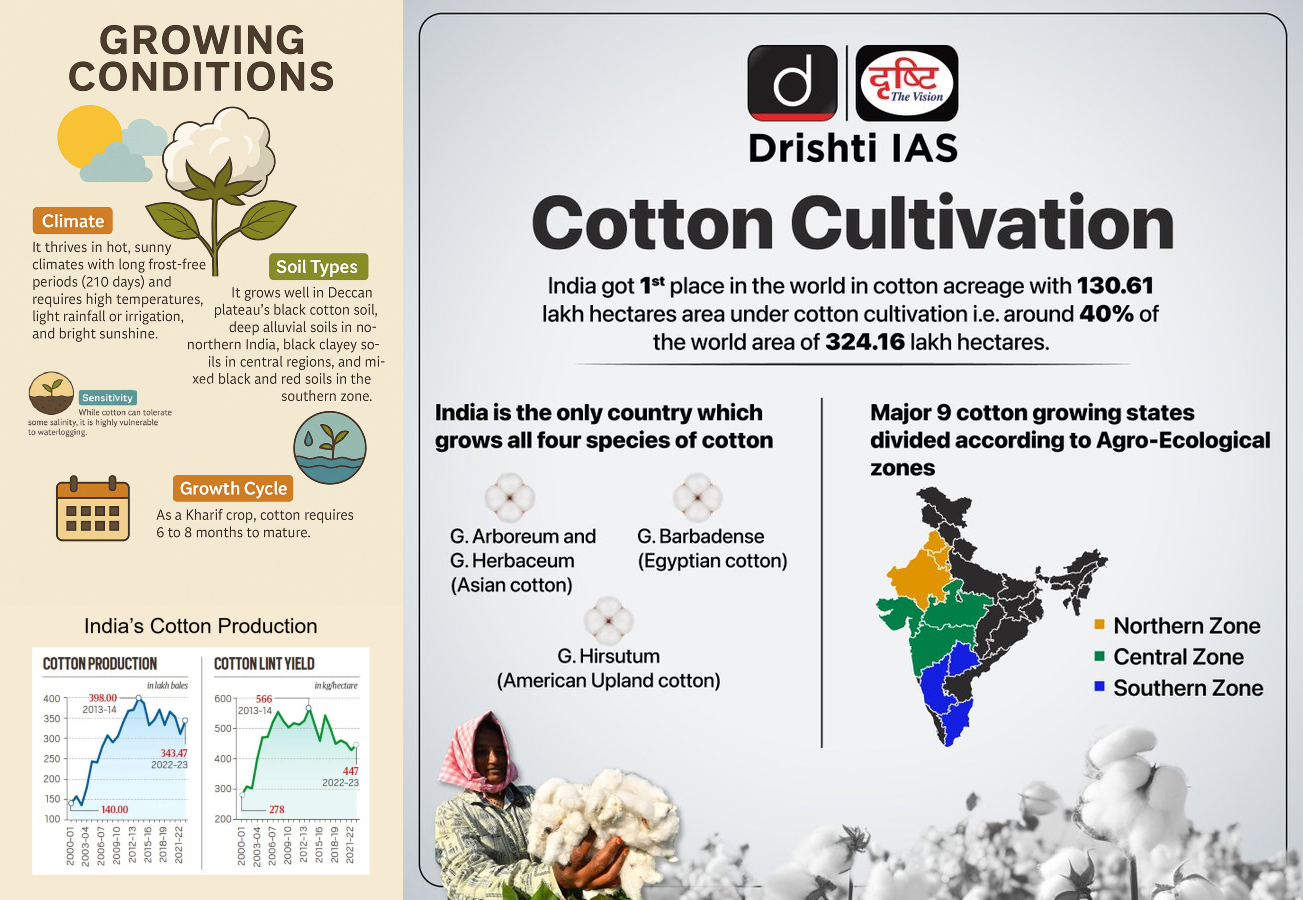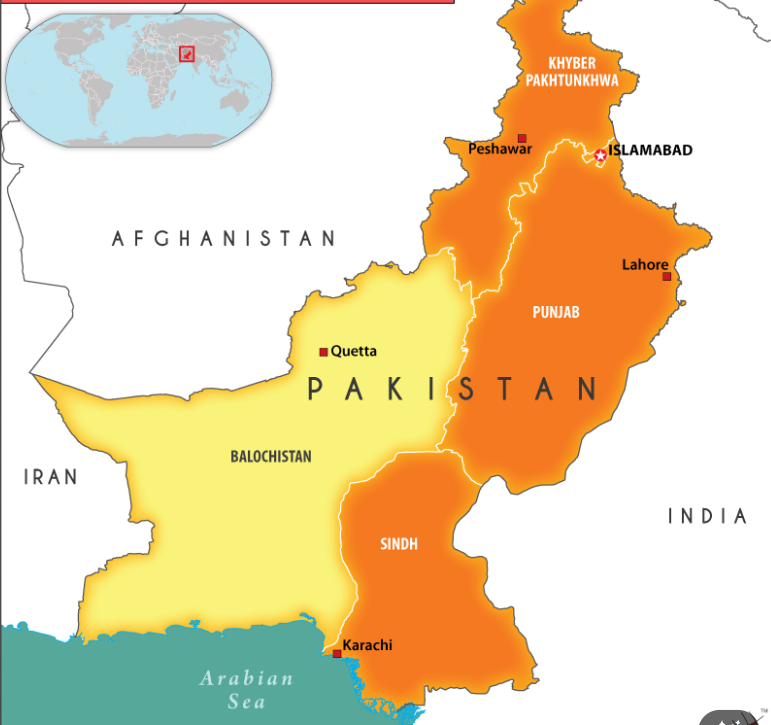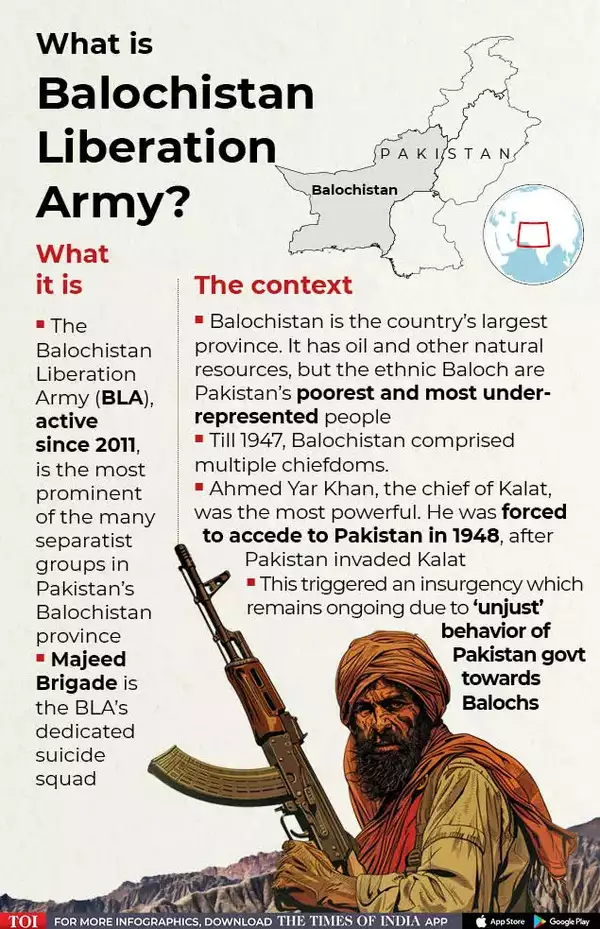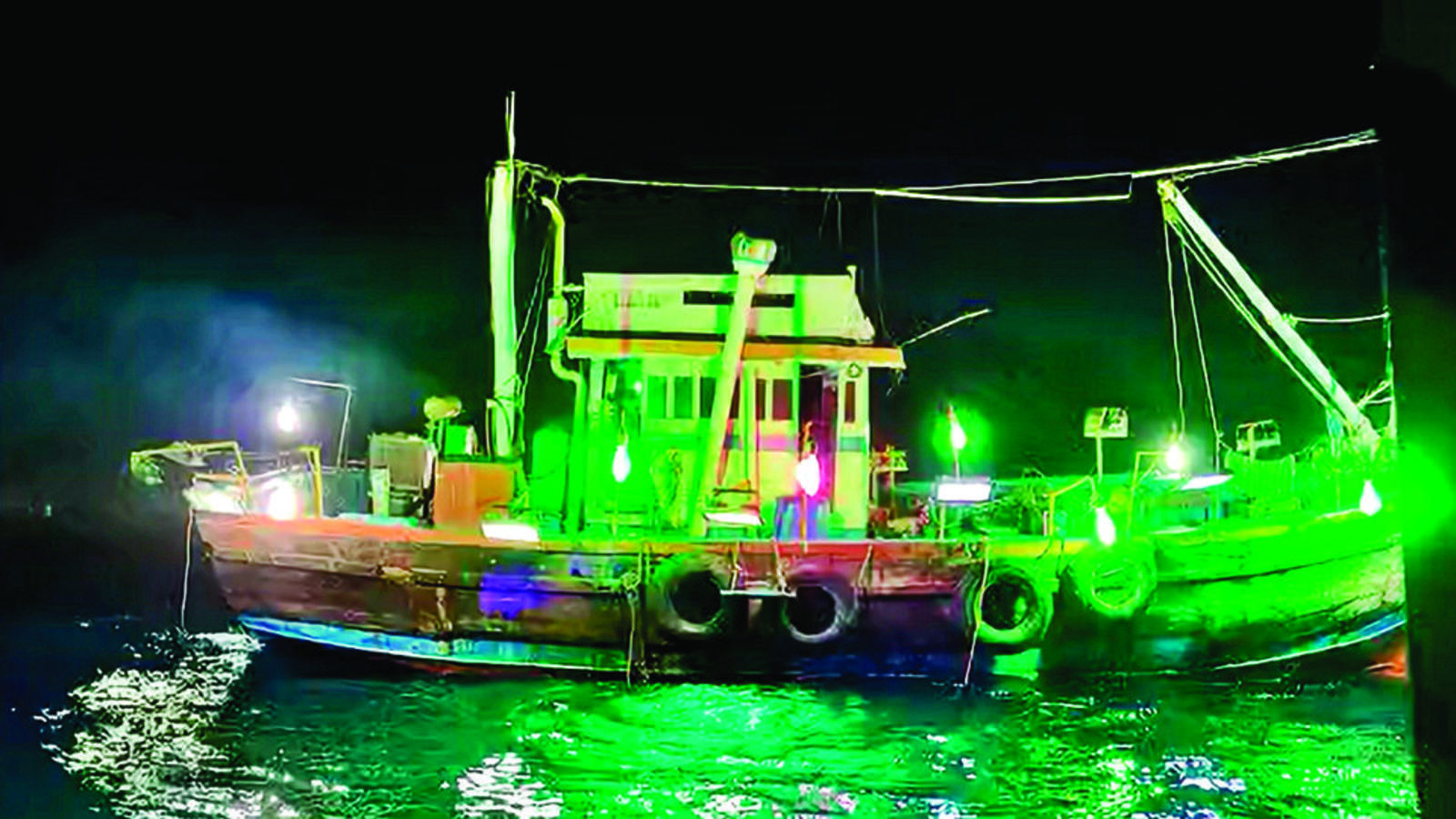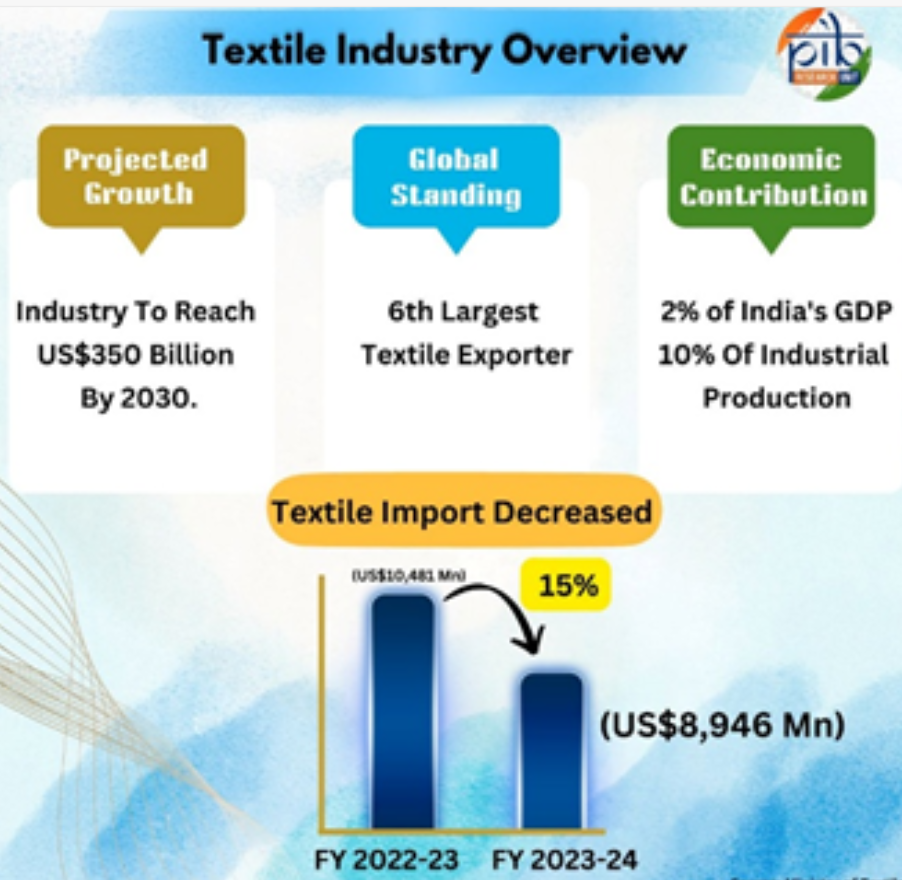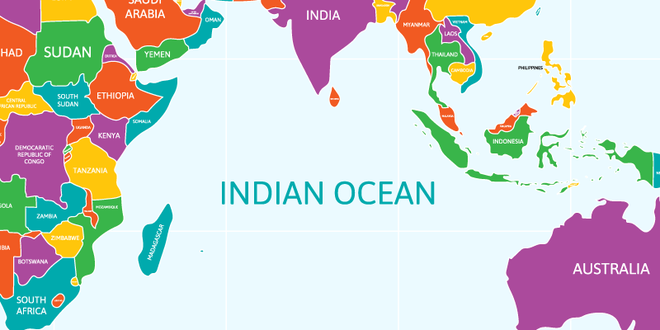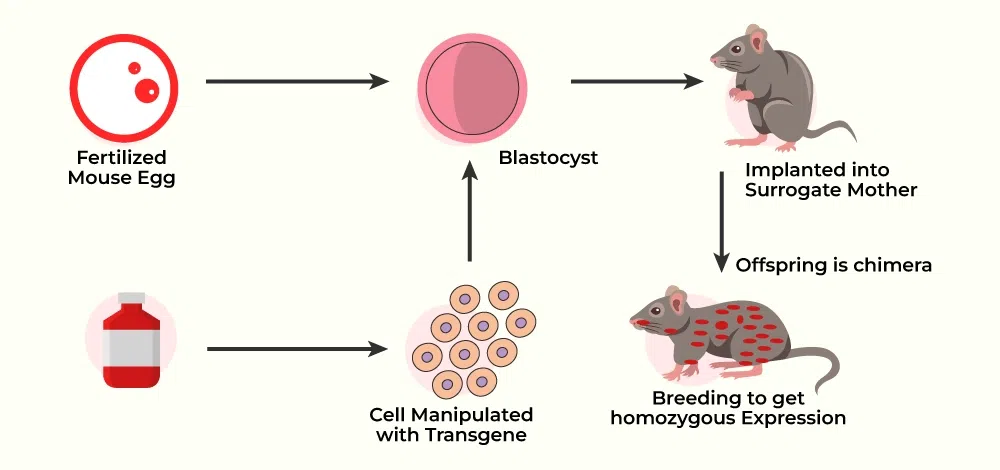Indian History
Centenary of Tagore’s Visit to China
For Prelims: Rabindranath Tagore, Mahatma Gandhi, Nobel Prize in Literature, Jallianwala Bagh Massacre (1919)
For Mains: Contributions of Rabindranath Tagore in Nation Building, Tagore’s views on Nationalism and Patriotism.
Why in News?
On 1st April 2025, Visva-Bharati University in Santiniketan hosted an international seminar to mark the 100th anniversary of Rabindranath Tagore’s visit to China (1924) and the 75th anniversary of diplomatic relations between India and China.
- The event was held at Cheena Bhavana of the Visva-Bharati University, South Asia’s oldest Chinese studies department.
Who was Rabindranath Tagore and his Contributions to Nation Building?
About
- Rabindranath Tagore, born in Calcutta on 7th May 1861, was a Bengali poet, novelist, playwright, musician, painter, philosopher, and educationist.
- He was popularly known as Gurudev, Kabiguru, and Biswakabi.
- Tagore was a good friend of Mahatma Gandhi and is said to have given him the title of Mahatma (the Great Soul).
- Mahatma Gandhi was the first person to call Tagore “Gurudev”, and referred to him as “poet of the world”.
- He became the first non-European to win the Nobel Prize in Literature (1913) for his work Gitanjali.
Tagore’s Contribution to Nation-Building
- Views on Nationalism: His idea of nationalism was both inclusive and spiritual. He believed nationalism should elevate human values, not breed hatred or extreme patriotism.
- Tagore’s patriotism was ethical and moral, rooted in universal humanism, respect for cultures, and inter-civilisational dialogue.
- He emphasized that India’s strength lay in its diversity and unity, not in uniformity or religious majoritarianism.
- Tagore’s nationalism was cosmopolitan, not isolationist which is relevant even today in times of rising ethnonationalism.
- In his book Nationalism (1917), he warned against Western-style aggressive nationalism, calling it a threat to peace and global harmony.
- Contribution in the National Movement of India: Though not an active political agitator, Tagore played a moral and intellectual role in India’s freedom struggle. During the Partition of Bengal (1905), he supported the Swadeshi movement, composing songs (Amar Sonar Bangla) to encourage unity and self-reliance.
- A major turning point came after the Jallianwala Bagh Massacre (1919) when he renounced the knighthood awarded by the British.
- The song Jana Gana Mana, the National Anthem of India, was originally written and composed in Bengali by Rabindranath Tagore.
- Contribution in Music, Dance, and Art: Tagore was a cultural revivalist who gave India a distinctive identity in global aesthetics.
- He composed over 2,000 songs, collectively known as Rabindra Sangeet, known for their lyrical depth and emotional richness.
- His music blended classical ragas, folk traditions, and spiritual themes, with songs like ‘Ekla Chalo Re’ becoming part of nationalist symbolism.
- He created dance dramas like Chitrangada, Shyama, and Chandalika, merging theatre, music, and classical Indian dance.
- As a painter, he introduced abstract and symbolic expression, challenging colonial artistic norms and emphasizing Indian visual identity.
- Contribution in Literature: He modernised Bengali prose and poetry while engaging with themes of freedom, identity, spirituality, and modernity. His major works include:
- Poetry: Gitanjali, Balaka, Sonar Tori, Manasi
- Novels: Ghare-Baire, Gora, Chokher Bali
- Plays: Chitra, The Post Office
- Essays: Sadhana: The Realisation of Life, The Religion of Man, Nationalism.
- Contribution in Education: Tagore envisioned education as a means to liberate the mind, not control it. In 1921, he founded Visva-Bharati University at Santiniketan, built on the philosophy of ‘learning in harmony with nature’.
- Visva-Bharati was a global centre of learning, with the motto “Yatra visvam bhavatyekanidam” (Where the world meets in one nest).
- In 1937, he established Cheena Bhavana to foster Indo-Chinese civilisational ties and global cultural dialogue.
What are the Key Areas of Convergence Between India and China?Click Here to Read: Areas of Convergence Between India and China |
Conclusion
Rabindranath Tagore was not merely a poet but was a visionary, reformer, and global thinker who redefined India’s cultural identity and intellectual future. His contributions to the freedom movement, art, education, and international diplomacy laid the foundation for modern India’s soft power and moral leadership.
|
Drishti Mains Question: “Rabindranath Tagore’s nation-building efforts went far beyond political activism and embraced culture, education, and ethical nationalism.” Discuss. |
UPSC Civil Services Examination, Previous Year Question (PYQ)
Prelims
Q. Who among the following is associated with ‘Songs from Prison’, a translation of ancient Indian religious lyrics in English? (2021)
(a) Bal Gangadhar Tilak
(b) Jawaharlal Nehru
(c) Mohandas Karamchand Gandhi
(d) Sarojini Naidu
Ans: (c)
Q. With reference to Madanapalle of Andhra Pradesh, which one of the following statements is correct? (2021)
(a) Pingali Venkayya designed the tricolour Indian National Flag here.
(b) Pattabhi Sitaramaiah led the Quit India Movement of Andhra region from here.
(c) Rabindranath Tagore translated the National Anthem from Bengali to English here.
(d) Madame Blavatsky and Colonel Olcott set up headquarters of Theosophical Society first here.
Ans: (c)


Agriculture
Decline in India’s Cotton Production
For Prelims: Cotton, Bt cotton, Genetically modified (GM) crop, whitefly, Pink bollworm, Kasturi Cotton
For Mains: Challenges in India’s Cotton Production, Role of Biotechnology in Agriculture
Why in News?
India, once the world’s largest cotton producer and exporter, is facing a significant decline in cotton production, primarily due to the lack of technological advancements and policy inaction.
What are the Reasons for Decline in India's Cotton Production?
- Initial Growth: Hybrid Cotton Varieties developed by Indian scientists like C.T. Patel and B.H. Katarki in the 1970s, has significantly improved yields.
- Bt (Bacillus thuringiensis) cotton, introduced in 2002–03, used genes from bacterium Bacillus thuringiensis to protect against pests like the American bollworm.
- By 2013–14, it covered over 95% of India’s cotton area, doubling yields to 566 kg per hectare (kg/ha). This helped India become the world’s top cotton producer by 2015–16 and a major exporter.
- Bt (Bacillus thuringiensis) cotton, introduced in 2002–03, used genes from bacterium Bacillus thuringiensis to protect against pests like the American bollworm.
- Stagnation after Success: Despite the success of Bt and Bollgard-II technologies, India has not approved any new genetically modified (GM) crops cotton variants since 2006.
- Indigenous innovations, such as whitefly- and pink bollworm-resistant cotton developed by Indian institutions, remain stuck in regulatory limbo.
- The 2010 moratorium on Bt brinjal, despite Genetic Engineering Appraisal Committee (GEAC) clearance, set a precedent for halting field trials of other GM crops, preventing the introduction of new technologies to improve cotton production.
- Infestation: The decline in cotton production in India is primarily due to the increased infestation of the pink bollworm (PBW). Initially, Bt cotton provided effective pest control, but over time, PBW developed resistance to Bt proteins.
- This pest now infests crops as early as 40-45 days after sowing, damaging bolls and flowers.
- The exclusive cultivation of Bt cotton has contributed to this resistance, leading to significant reductions in both the quality and quantity of cotton lint.
- Impact on Production: India's cotton production, which reached 39.8 million bales in 2013-14, is expected to drop to 29.5 million bales by 2024-25, with yields falling below 450 kg/ha, far below global leaders like China (1993 kg/ha).
What are the Concerns Regarding Decline in Cotton Production?
- Rising Dependence on Imports: Cotton imports surged from USD 518.4 million in 2023–24 to USD 1.04 billion in 2024–25, while exports fell from USD 729.4 million to USD 660.5 million.
- Production decline reversed India’s trade position, with imports surpassing exports, eroding its previous competitive edge in the global cotton market.
- Contradictory Trade and Tech Policies: Indigenous GM innovations from premier institutions such as National Botanical Research Institute have been delayed or ignored.
- While field trials of GM crops are blocked, however India allowed the import of GM soyameal in 2021.
- The moratorium on GM crops and lack of regulatory clarity have deterred innovation in the cotton sector. Regulatory decisions have shifted from scientific risk assessment to public sentiment and legal interventions.
- Missed Opportunities in Global Markets: Countries like the US and Brazil, with robust biotech adoption, are capturing the export space once dominated by India.
- Domestic textile industries are now sourcing cotton from abroad, adding to input costs and reducing competitiveness.
- Decline in Cottonseed Oil: Cottonseed contributes to edible oil production, making it the third-largest vegetable oil source in India after mustard and soybean.
- Lower cotton output affects oil production, increasing India's edible oil import dependency.
Note: The Cotton Development Programme under the National Food Security Mission (NFSM) aims to boost cotton production and productivity in major cotton-growing states and has been implemented by the Department of Agriculture & Farmers Welfare since 2014-15.
What Can be Done to Enhance India’s Cotton Production?
- Technological Interventions: Expedite regulatory clearance for pest-resistant and high-yielding GM cotton hybrids (e.g., whitefly-resistant and pink bollworm-resistant varieties).
- Promotion of High-Density Planting System (HDPS): Expand the adoption of HDPS across cotton-growing states to increase plant population per unit area and improve yield.
- Farmer-Centric Extension Services: Scale platforms like Cott-Ally to provide real-time updates on MSP, weather, pest alerts, and procurement logistics.
- Enhance agricultural extension through Krishi Vigyan Kendras and the Cotton Corporation of India to disseminate best farm practices.
- Post-Harvest and Market Reforms: Expand “Kasturi Cotton” branding with QR-code traceability to ensure quality assurance in global markets.
- Operationalize the five-year Mission for Cotton Productivity (announced in Budget 2025–26) to enhance yield, ensure sustainability, and promote Extra-Long Staple cotton cultivation (known for their superior quality, softness, and durability), thereby reducing import dependence.
- Encourage investment in spinning, weaving, and garmenting sectors linked with cotton clusters to ensure holistic sectoral growth.
|
Drishti Mains Question: Discuss the impact of Bt cotton on India’s cotton production and analyze the reasons behind the stagnation in its success. |
UPSC Civil Services Examination Previous Year Question (PYQ)
Prelims
Q1. The black cotton soil of India has been formed due to the weathering of (2021)
(a) brown forest soil
(b) fissure volcanic rock
(c) granite and schist
(d) shale and limestone
Ans: (b)
Q2. A state in India has the following characteristics: (2011)
- Its northern part is arid and semi-arid.
- Its central part produces cotton.
- Cultivation of cash crops is predominant over food crops.
Which one of the following states has all of the above characteristics?
(a) Andhra Pradesh
(b) Gujarat
(c) Karnataka
(d) Tamil Nadu
Ans: (b)
Mains
Q. Analyse the factors for the highly decentralised cotton textile industry in India.


International Relations
Insurgency in Balochistan
For Prelims: Baloch Militancy, Liberation of Bangladesh, Taliban, Iran, Pakistan, Sunni Militant group, Jaish al-Adl, Terrorism.
For Mains: Reasons for Unrest in Balochistan, India’s Stand on Balochistan Issue, Impact on India of Balochistan Unrest, Pakistan and the Baloch Militancy, Bilateral, regional and global groupings and agreements involving India and/or affecting India’s interests.
Why in News?
Balochistan province of Pakistan is witnessing a resurgence of insurgency and unrest. The recent train hijacking by Balochistan Liberation Army (BLA) militants, demanding the release of their comrades, highlights the deteriorating security situation in the region.
Balochistan and History of Insurgency
- Geography: Balochistan is Pakistan's southwestern province that borders Afghanistan, Iran, Punjab and Sindh (provinces of Pakistan), and the Arabian Sea.
- Demography: It covers 44% of the country's total land area but is home to only 5% of its population, predominantly inhabited by the Baloch, a Sunni Muslim ethnic group, who also have significant communities in Iran and Afghanistan.
- It is the largest and least populated province, rich in natural resources such as natural gas, coal, gold, and copper, but remains highly impoverished, with 70% of its population classified as multidimensionally poor.
- History of Insurgency: At the time of Partition of India (1947), Balochistan comprised 4 princely states: Kharan, Makaran, Las Bela, and Kalat, with Kalat opting for independence while the others joined Pakistan.
- Though Jinnah initially accepted Kalat’s sovereignty, British pressure led to its forced annexation in 1948 after isolating it strategically. Allegations of the Khan’s intent to join India further accelerated Pakistan’s actions.
- Resistance to Pakistani rule intensified over the years. The first major rebellion broke out in 1954 following Pakistan’s One-Unit policy, which merged Balochistan with West Pakistan in 1955, deepening resentment.
- In 1958, Khan of Kalat, Nawab Nauroz Khan, declared independence but was tricked into surrendering and imprisoned.
- A third rebellion in 1963 sought the withdrawal of Pakistani troops and recognition of Balochistan as a province (materialised in 1970).
- Inspired by Bangladesh’s 1971 independence, Baloch leaders demanded autonomy, but the Pakistan President dismissed the Balochistan government in 1973, triggering a 4-year insurgency.
- The fifth wave of conflict began in the mid-2000s, triggered by alleged military excesses. The insurgency continues, fueled by grievances over resource exploitation and political marginalization, with no resolution in sight.
- Amnesty International reports that over 10,000 Baloch have disappeared in Pakistan since 2011.
What are the Reasons for Conflict in Balochistan?
- Historical Grievances: Balochistan’s forced annexation by Pakistan in 1948 and the dismissal of its provincial government in 1973 deepened its alienation.
- The region lacks effective grievance redressal mechanisms, with Punjabi elites dominating bureaucracy and sidelining Baloch representation.
- Economic Exploitation: Despite abundant natural resources like gas, gold, and iron, Balochistan remains impoverished, with locals confined to low-skilled jobs due to poor education and infrastructure. It has Pakistan’s lowest literacy rate and worst Gender Parity Index (GPI).
- The Baloch nationalists view Chinese investments such as Gwadar Port and CPEC as benefiting Pakistan’s elite while marginalizing locals, fearing demographic changes and further exploitation.
- Human Rights Violations & Militarization: Enforced disappearances, extra-judicial killings, and fake encounters are frequently used as counter-insurgency tactics.
- The Commission of Inquiry on Enforced Disappearances constituted by Pakistan in 2011 recorded 2,752 cases, while civil society groups claim over 7,000 disappearances (2002–2024).
- Religious Extremism: Balochistan faces militant recruitment by groups like Al-Qaeda, Tehrik-e-Taliban Pakistan (TTP), and sectarian outfits, with the Hazara Shia community frequently targeted by sectarian violence.
- Geopolitical Factors: Pakistan has alleged foreign support for militancy and separatist tendencies in Balochistan, citing instability in Afghanistan and certain terror groups from Iran as contributing factors.
What is India’s Stand on Balochistan Issue?
- India’s Cautious Approach: India denies involvement in Balochistan’s affairs and rejects Pakistan’s allegations of supporting Baloch militants, urging Pakistan to address its internal issues instead of blaming others.
- Diplomatic Stance: India’s stance on Balochistan is shaped by geopolitical considerations, regional stability, and its complex ties with Pakistan. India continues to raise the issue of minority rights and related concerns in Balochistan, in alignment with its democratic and secular values.
- In 2016, the Prime Minister raised Balochistan’s human rights situation in his Independence Day speech.
- Regional Stability: The unrest in Balochistan, coupled with China’s CPEC involvement, poses security challenges in South Asia.
- India balances its strategic interests while advocating for Baloch rights within international norms.
Conclusion
The Balochistan issue arises from historical grievances, economic exploitation, and political marginalization. Pakistan’s military approach has been ineffective, highlighting the need for political reforms and fair resource distribution. India views the situation strategically, considering its regional security impact.
|
Drishti Mains Question: Discuss the historical and geopolitical factors driving the Balochistan insurgency. How does the situation impact regional stability, and what should be India's strategic approach? |
UPSC Civil Services Examination, Previous Year Question (PYQ)
Prelims
Q. What is the importance of developing Chabahar Port by India? (2017)
(a) India’s trade with African countries will enormously increase.
(b) India’s relations with oil-producing Arab countries will be strengthened.
(c) India will not depend on Pakistan for access to Afghanistan and Central Asia.
(d) Pakistan will facilitate and protect the installation of a gas pipeline between Iraq and India.
Ans: (c)
Mains
Q. In what ways would the ongoing U.S-Iran Nuclear Pact Controversy affect the national interest of India? How should India respond to this situation? (2018)
Q. The question of India’s Energy Security constitutes the most important part of India’s economic progress. Analyse India’s energy policy cooperation with West Asian countries. (2017)


Facts for UPSC Mains
Growing Threat of Light Fishing in India
Why in News?
India's 7,500-km coastline, home to rich marine biodiversity and millions of fishers, faces a growing threat from illegal light fishing.
- Despite a national ban within the Exclusive Economic Zone (EEZ) since 2017, weak enforcement has allowed the practice to persist, prompting calls for urgent action to prevent ecological and social damage.
What is Light Fishing?
- About: Light fishing involves the use of high-intensity artificial lights to attract fish and squid to the surface, making them easy to catch.
- Light fishing is prohibited under the National Policy on Marine Fisheries (NPMF), 2017 which aims to protect marine resources and promote sustainability by banning destructive practices like light fishing.
- Impacts: Light fishing leads to the indiscriminate capture of fish, including juveniles, depleting stocks and threatening future populations.
- It also disturbs marine ecosystems, degrading coral reefs. Squid (soft-bodied mollusk), vital to the marine food web, are particularly vulnerable, causing cascading effects on larger predator species and disrupting the food chain.
- Light fishing harms traditional fishers’ catches, especially in states like Andhra Pradesh, Maharashtra, and Kerala.
- Mechanized trawlers using powerful lights create unfair competition, escalating tensions between industrial operators and local communities.
Why is Enforcement of Light Fishing Regulations Weak in India?
- Weak Policy Framework: While the EEZ ban is in place, enforcement within territorial waters (up to 12 nautical miles) is left to states (‘Entry 21’ of the State List in the Seventh Schedule of the Constitution), leading to inconsistency.
- Tamil Nadu and Andhra Pradesh have only partial bans and Maharashtra focuses on trawling rather than light fishing.
- Institutional Capacity Gaps: Coastal Police can only patrol up to 5 nautical miles; light fishing typically occurs beyond this limit.
- Inadequate Penalties: Fines (e.g., Rs 16,000 in Karnataka) are dwarfed by profits (up to Rs 1 lakh per trip), failing as a deterrent.
- Technological Proliferation: Affordable Light Emitting Diodes (LEDs) and portable generator technologies have made light fishing accessible and widespread.
What Needs to Be Done to Address Inconsistent Enforcement of Light Fishing?
- Nationwide Uniform Ban: A comprehensive, enforceable ban on light fishing, aligned with the 2017 EEZ restrictions, should cover all territorial waters supporting the SDG 14 (Life Below Water).
- Integrated Enforcement Mechanism: An integrated enforcement mechanism with multi-agency coordination (Coastal Police, Fisheries Departments, Coast Guard) and shared patrols, alongside satellite tracking (like Earth Observation Satellite-06) will enhance surveillance.
- Collaboration with the Indian National Centre for Ocean Information Services will further strengthen enforcement efforts.
- Economic Transition Support: Under Pradhan Mantri Matsya Sampada Yojana provide subsidies for eco-friendly gear and training in sustainable practices, along with alternative livelihoods like aquaculture and tourism for those moving away from light fishing.
- Global Best Practices: Countries like Japan and Italy enforce seasonal and depth-based restrictions on light fishing.
- India can adopt such adaptive policies to balance biodiversity conservation and economic sustainability.
|
Drishti Mains Question: Discuss the environmental and socio-economic impacts of illegal light fishing on India’s coastal ecosystems and fishing communities. |
UPSC Civil Services Examination, Previous Year Question (PYQ)
Prelims
Q. Which one of the following is a filter feeder? (2021)
(a) Catfish
(b) Octopus
(c) Oyster
(d) Pelican
Ans: (c)
Q. Under the Kisan Credit Card scheme, short-term credit support is given to farmers for which of the following purposes? (2020)
- Working capital for maintenance of farm assets
- Purchase of combine harvesters, tractors and mini trucks
- Consumption requirements of farm households
- Post-harvest expenses
- Construction of family house and setting up of village cold storage facility
Select the correct answer using the code given below:
(a) 1, 2 and 5 only
(b) 1, 3 and 4 only
(c) 2, 3, 4 and 5 only
(d) 1, 2, 3, 4 and 5
Ans: (b)


Facts for UPSC Mains
FAO Report on Plant Genetic Resources for Food and Agriculture
Why in News?
The Food and Agriculture Organization (FAO) has released the 3rd Report on the State of the World’s Plant Genetic Resources for Food and Agriculture (SoW3) after the 20th Session of the Commission on Genetic Resources for Food and Agriculture (CGRFA-20) held in Rome, Italy.
- The report highlighted that although around 6,000 plant species are cultivated globally, 60% of the world's crop production is concentrated in just 9 crops.
- Note: The State of the World’s Plant Genetic Resources for Food and Agriculture (SoW-PGRFA) Report, published by FAO under the CGRFA, is a periodic global assessment of plant genetic resources, focusing on their conservation, sustainable use, and role in food security.
What are the Key Highlights of the FAO’s Report on World’s Plant Genetic Resources?
- Global Crop Dependency: 60% of global crop production relies on just 9 crops- sugarcane, maize, rice, wheat, potatoes, soybeans, oil palm fruit, sugar beet, and cassava.
- Despite the cultivation of 6,000 plant species, crop diversity is declining, posing risks to global food security.
- Threat to FV/LR: In India, over 50% of Farmers Varieties and Landraces (FV/LRs) across five agro ecological zones are under threat. The 2016 Seed Hub Initiative has boosted pulse production by promoting high-yielding varieties (HYVs).
- FV/LRs are traditional crops adapted to local conditions, enhancing biodiversity, food security, and climate resilience. They offer greater resistance to pests, diseases, and drought than commercial hybrids, e.g., Kala Namak Rice, Chapati Wheat, and Rajnigandha Cotton.
- Globally, 6% of FV/LR diversity is at risk, with losses exceeding 18% in some regions. Southern Africa, the Caribbean, and Western Asia are the most affected.
- Conservation Scenario: 42% of plant taxa face threats in in-situ conservation, while ex-situ efforts face financial, political, and infrastructural constraints, along with skill shortages.
- Crop Diversity and climate change:
- Extreme weather events accelerate genetic diversity loss, while many countries lack disaster impact assessment mechanisms.
- Post-disaster germplasm distribution i.e. the supply of plant genetic material for cultivation and conservation faces challenges due to poor seed adaptability to local soil.
Commission on Genetic Resources for Food and Agriculture (CGRFA)
- Establishment: Founded by the Food and Agriculture Organization (FAO) in 1983 to address issues related to genetic resources for food and agriculture (GRFA).
- Objective: Serves as the only permanent intergovernmental body dedicated to the conservation and sustainable use of biological diversity in agriculture.
- Membership: 179 countries (as of January 2023), including India, along with the European Union.
- Major Achievements of CGRFA:
- International Treaty on Plant Genetic Resources for Food and Agriculture (ITPGRFA) (2001): Facilitated its adoption, recognizing farmers' contributions to crop diversity and establishing a global framework for assessing plant genetic materials for breeders, farmers, and researchers.
- Animal Genetic Resources (AnGR) and the Global Plan of Action (GPA): Initiated work on AnGR in 1997, leading to the first-ever Report on the State of the World’s Animal Genetic Resources and culminating in the adoption of the GPA in 2007.
UPSC Civil Services Examination, Previous Year Question (PYQ)
Prelims
Q. How is permaculture farming different from conventional chemical farming? (2021)
- Permaculture farming discourages monocultural practices but in conventional chemical farming, monoculture practices are predominant.
- Conventional chemical farming can cause an increase in soil salinity but the occurrence of such phenomenon is not observed in permaculture farming.
- Conventional chemical farming is easily possible in semi-arid regions but permaculture farming is not so easily possible in such regions.
- Practice of mulching is very important in permaculture farming but not necessarily so in conventional chemical farming.
Select the correct answer using the code given below.
(a) 1 and 3
(b) 1, 2 and 4
(c) 4 only
(d) 2 and 3
Ans: (b)
Q. Consider the following agricultural practices: (2012)
- Contour bunding
- Relay cropping
- Zero tillage
In the context of global climate change, which of the above helps/help in carbon sequestration/storage in the soil?
(a) 1 and 2 only
(b) 3 only
(c) 1, 2 and 3
(d) None of them
Ans: (b)


Rapid Fire
Birth Anniversary of Shree Harichand Thakur
The Prime Minister paid tribute to Shree Harichand Thakur (1812-1878) on his 214th birth anniversary (27th March 2025) and extended best wishes for the Matua Dharma Maha Mela 2025.
- Harichand Thakur: A Bengal-based social reformer, he founded the Namasudras (Matuas) sect, a reformist Vaishnavite movement opposing caste oppression, attracting marginalized communities like Namasudras, Malis, and Telis.
- Born in Orakandi, Bangladesh, into a Scheduled Caste (SC) peasant family, he was revered as an avatar of Vishnu/Krishna.
- His son Guruchand Thakur later worked with missionary Cecil Silas Mead to reclassify Chandalas (lower caste) as Namasudras.
- Matuas: A socio-religious group originally from East Pakistan (now Bangladesh), many migrated to India after the Bangladesh Liberation War 1971 due to religious persecution.
- The Matuas make up 17.4% of West Bengal’s SC population, second to Rajbanshis.
- The Matua Dharma Maha Mela celebrates their heritage. The community has embraced the implementation of the CAA Act.
| Read More: Matua Community. |


Rapid Fire
5 Years of National Technical Textiles Mission
The National Technical Textiles Mission (NTTM), launched in 2020 by the Ministry of Textiles, aims to position India as a global leader in technical textiles by 2025-26 has completed 5 years.
- Technical Textiles: Technical textiles are functional fabrics made from natural and synthetic fibers, used across industries like defense, healthcare, infrastructure, automotive, medicine etc.
- Examples: Mosquito nets, seat belts, helmets, fireproof jackets, and sanitary napkins.
- NTTM: Launched for a period from 2020-21 to 2025-26, the mission focuses on promoting research, market growth, exports, and skill development in key sectors like agriculture, healthcare, and infrastructure in technical textiles.
- Key Components: Supporting R&D for new materials, promoting market adoption, strengthening exports, and training 50,000 individuals through skill development programs.
- Schemes Related to the Textile Sector: PM MITRA Park Scheme, Amended Technology Upgradation Fund Scheme (ATUFS), Scheme for Integrated Textile Parks (SITP), SAMARTH Scheme, Power-Tex India.
- PM Mega Integrated Textile Regions and Apparel (PM MITRA) Park Scheme: Launched to create integrated textile parks under PPP mode via SPVs, with facilities like processing units and design centres.
- Inspired by the 5F vision (Farm to Fibre to Factory to Fashion to Foreign), it aims to boost competitiveness, cut logistics costs, and generate jobs in the textile sector.
- PM Mega Integrated Textile Regions and Apparel (PM MITRA) Park Scheme: Launched to create integrated textile parks under PPP mode via SPVs, with facilities like processing units and design centres.
| Read More: National Technical Textiles Mission |


Rapid Fire
IOS Sagar and AIKEYME
The Indian Navy has announced its maiden initiatives of Indian Ocean Ship (IOS) Sagar and Africa India Key Maritime Engagement (AIKEYME), which are aimed at consolidating Indian Navy’s stature as the ‘Preferred Security Partner’ and ‘First Responder’ in Indian Ocean Region (IOR) and advancing the vision of Mutual and Holistic Advancement for Security Across the Regions (MAHASAGAR).
- IOS Sagar: INS Sunayna is being deployed to the Southwest IOR with a combined crew of India and nine Friendly Foreign Countries (Comoros, Kenya, Madagascar, Maldives, Mauritius, Mozambique, Seychelles, Sri Lanka , South Africa).
- INS Sunayna will visit Dar-es-Salaam (Tanzania), Nacala (Mozambique), Port Louis (Mauritius), Port Victoria (Seychelles), and Male (Maldives) for joint Exclusive Economic Zones surveillance.
- The participants of IOS Sagar are also planned to witness harbour phase activities of Exercise AIKEYME at Dar-es-Salaam, Tanzania.
- AIKEYME: It is co-hosted by India and Tanzania, with its first edition in April 2025 at Dar-es-Salaam, Tanzania.
- The exercise involves 11 nations, including Comoros, Djibouti, Eritrea, Kenya, Madagascar, Mauritius, Mozambique, Seychelles, South Africa, India, and Tanzania.
- Includes training on anti-piracy operations, Search and Rescue (SAR), seamanship skills, visit board search and seizure (VBSS), and helicopter operations.
- INS Sunayna: It is an Offshore Patrol Vessel, stationed at Southern Naval Command (Kochi).
| Read more: Building a Secure and Prosperous Indian Ocean Region |


Rapid Fire
Transgenic Research
Transgenic research has gained significant attention, particularly regarding the use of transgenic mice in scientific studies, focusing on their uses and importance in advancing scientific research.
- Transgenic research: It involves altering the genomes of organisms by introducing foreign Deoxyribonucleic Acid (DNA) sequences from another species, typically in a laboratory setting.
- The term “transgenic” comes from the root word "trans" meaning "across" or "from one to another," and "genic," which refers to genes.
- This research creates transgenic animals, plants, and microorganisms for genetic studies, disease modeling, and biotechnology advancements.
- Transgenic mice are commonly used in genetic studies to explore gene functions, disease mechanisms, and their roles in cancer research, genetic disorders, and reproductive health, contributing to advancements in biotechnology and agriculture.
- Transgenic Research in India: Cotton is the only transgenic crop that is being commercially cultivated in India.
- The Genetic Engineering Appraisal Committee (GEAC) is the apex body under the Ministry of Environment, Forest and Climate Change responsible for evaluating the environmental impact of research and industrial use of hazardous microorganisms and recombinants.
| Read more: Transgenic Crops |


Rapid Fire
Tribhuvan Sahkari University Bill 2025
The Lok Sabha passed the Tribhuvan Sahkari University Bill, 2025, which will establish India’s first national cooperative university to advance education and training in the cooperative sector.
- Named after Amul founder Tribhuvan Kashibhai Patel, the university will be established in Gujarat with nationwide jurisdiction for cooperative training institutes, offering degree, diploma, and PhD courses to certify 8 lakh people annually.
- The university will be registered under the Societies Registration Act, 1860.
- The need for a cooperative university is driven by the limited reach of training programs from institutions like National Cooperative Development Corporation (NCDC) and the National Cooperative Union of India (NCUI), despite the sector's vast size.
- Cooperative Sector: It consists of member-owned organizations that aim to meet shared needs through mutual assistance and equitable resource distribution, fostering rural development and financial inclusion.
- The Constitution (97th Amendment) Act, 2011, made the right to form cooperative societies a Fundamental Right by inserting the term "cooperative societies" into Article 19(1)(c) of the Constitution.
- The cooperative sector in India is regulated by the Cooperative Societies Act, 1912, Multi-State Cooperative Societies Act, 2002.
- The MSCS (Amendment) Act, 2023 enhances governance and transparency in multi-state cooperatives.
| Read more: Cooperative Movement in India |




